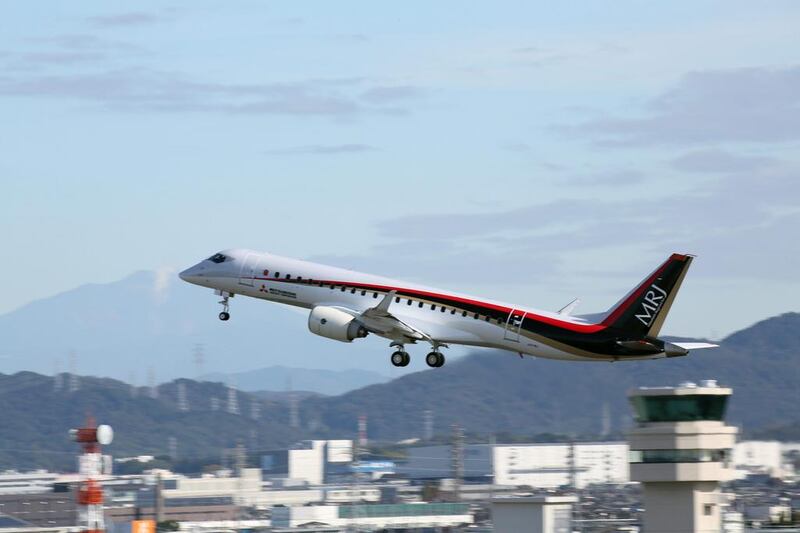Japan’s biggest airline and the launch customer for the country’s first commercial jetliner in 43 years, has expressed dismay at the latest postponement by the maker of the plane Mitsubishi Heavy Industries.
Mitsubishi Aircraft Corp, a unit of the conglomerate, has announced a fifth delay in handing over the MRJ regional jet to airlines and also announced about a 30 per cent jump in development costs, raising concerns about winning new orders for the single-aisle plane.
Mitsubishi Aircraft has 447 orders for the plane, including options and purchase rights. ANA said it was “disappointed” at this latest delay but will continue to support the development of the jet as its launch customer.
“We remain confident of the benefits the MRJ will bring to the ANA fleet in terms of performance and passenger comfort,” the carrier said. It has 25 of the planes on order, including options.
The Utah-based SkyWest is the MRJ’s biggest customer to date with an order for 200 planes including options. The plane builder also has as many as 100 orders from Trans States Airlines, also based in the United States.
Its launch customer ANA will get the jet in 2020, two years later than the current estimate, Mitsubishi said in Tokyo today. Revision of some electrical configuration to meet certification requirements prompted the latest pushback of the deadline.
The Japanese conglomerate has brought in bullet-train engineers and flown the jets to the United States to speed up certification as it attempts to break into the dominance of Brazil’s Embraer and Canada’s Bombardier in the market for aircraft with fewer than 100 seats.
The move is “debilitating” for Mitsubishi, said Saj Ahmad, an analyst at London-based StrategicAero Research.
“The MRJ delays not only hand the advantage to competitors, but will make the MRJ harder to sell,” Mr Ahmad said. “It’s clear that the technical obstacles preventing its certification are presently out of scope for Mitsubishi to contain.”
Speaking today, the Mitsubishi chief executive Shunichi Miyanaga declined to say from what base the costs were going up. The company’s chief financial officer Masanori Koguchi said in June the jet’s development costs had already tripled to as much as us$5.3 billion from initial estimates. Mr Miyanaga declined to provide new financial data on costs.
Mitsubishi Aircraft has flown three MRJ planes to the US for testing, following setbacks last year. Even with the delays, Mitsubishi has an advantage because it is developing an aircraft with a new design, a company spokeswoman said.
“We’re explaining everything in detail to our stakeholders,” Mr Miyanaga said today. “We’re facing the risks and taking a forward-looking attitude.”
The jet, which can seat as many as 92 people, made its first flight in 2015 and won its first order from a European company in February.
Japan’s last locally produced commercial aircraft was the YS-11, a turboprop made by Nihon Aircraft Manufacturing, a consortium that included Mitsubishi Heavy, Kawasaki Heavy Industries and Fuji Heavy Industries. Production was stopped in 1974 after 182 of the planes were sold.
* Bloomberg
business@thenational.ae
Follow The National's Business section on Twitter






